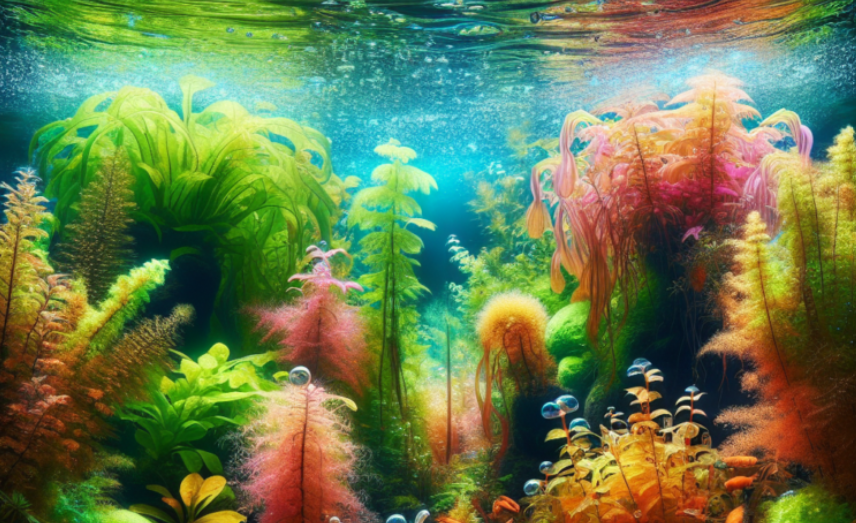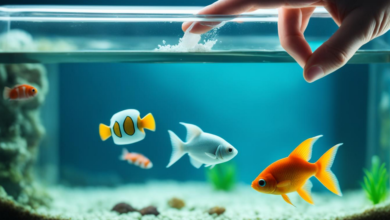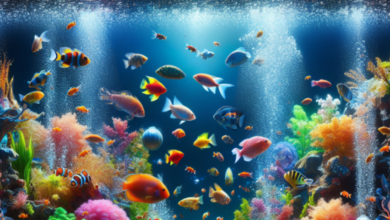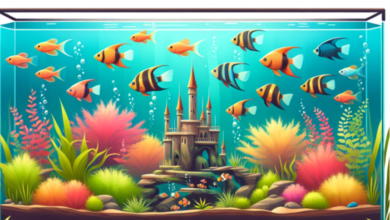Introduction
Aquarium plants not only add beauty and vibrancy to your aquatic environment but also play a crucial role in maintaining a healthy ecosystem for your fish. To ensure your aquarium plants flourish, choosing the right substrate is essential. In this comprehensive guide, we will explore the various types of substrates available and provide you with valuable insights to help you make an informed decision. Let’s dive in!
1. Understanding the Importance of Substrate
Having a suitable substrate is vital for the growth and overall health of your aquarium plants. It serves as a foundation, providing essential nutrients, stability, and anchorage for the plants’ root systems. By selecting the ideal substrate, you can mimic the natural habitat of the plants, encouraging them to thrive.
2. Gravel: The Classic Choice
One of the most commonly used substrates in aquariums is gravel. It is available in various sizes and colors, allowing you to create a visually appealing underwater landscape. Gravel is an excellent choice for beginner aquarists due to its affordability and ease of maintenance. However, it is important to note that gravel alone may not provide adequate nutrients for demanding plant species.
3. Sand: Fine and Versatile
Sand is another popular substrate option that can create a stunning aesthetic. It offers a finer texture compared to gravel, resembling natural riverbeds or ocean floors. Sand is particularly beneficial for plants with delicate roots, as it allows them to spread and anchor more easily. However, it’s important to choose a sand type specifically designed for aquarium use to avoid compaction and excessive cloudiness.
4. Soil: Nutrient-Rich and Fertile
If you’re seeking optimal growth for your aquarium plants, soil-based substrates are worth considering. Enriched with essential nutrients, organic matter, and beneficial bacteria, these substrates provide a fertile environment for plants to flourish. Soil substrates are often recommended for advanced aquarists and planted tanks, as they require careful monitoring and maintenance.
5. Clay: A Unique Option
Clay-based substrates are gaining popularity among aquarium enthusiasts. They offer excellent nutrient retention and can significantly enhance plant growth. Clay substrates provide a stable anchoring medium, preventing plants from uprooting easily. However, it is important to note that clay can make the water slightly cloudy initially, requiring patience and regular water changes to maintain water clarity.
6. Coir: Natural and Sustainable
Derived from coconut husks, coir is an organic substrate option that promotes healthy plant growth. It is environmentally friendly and provides excellent water retention capabilities. Coir substrates are often used in aquascaping and can be mixed with other substrates to create a balanced environment for aquatic plants.
7. Choosing the Right Substrate for Your Plants
Selecting the ideal substrate for your aquarium plants depends on various factors such as the plant species, lighting conditions, and personal preferences. It is crucial to research the specific requirements of your chosen plants to determine the best substrate match. Consider factors like nutrient availability, pH buffering capacity, and grain size when making your decision.
8. Adding Nutrient Supplements
While some substrates may already contain essential nutrients, others may require additional supplementation. Fertilizer tablets or liquid fertilizers can be used to provide the necessary nutrients for your plants. It’s essential to follow dosage instructions carefully to avoid over or under-fertilization, which can have adverse effects on your plants and water quality.
9. Maintaining Your Substrate
Regular maintenance of your substrate is vital to ensure the long-term health of your aquarium plants. Gentle vacuuming during water changes helps remove debris and excess waste that can accumulate on the substrate’s surface. Avoid disturbing the substrate too deeply, as it may disrupt the root systems of your plants.
10. Creating a Balanced Aquatic Environment
To create a harmonious aquatic environment, consider incorporating hardscape elements like rocks, driftwood, or decorative items alongside your chosen substrate. These additions not only enhance the visual appeal but also provide additional surfaces for beneficial bacteria growth and serve as hiding spots for fish.
11. Common Mistakes to Avoid
When it comes to selecting and maintaining your aquarium substrate, certain mistakes should be avoided. These include choosing the wrong substrate for your plant species, neglecting regular maintenance, and over or under-fertilizing. By educating yourself about these common pitfalls, you can ensure a thriving and beautiful aquarium.
12. Frequently Asked Questions
Q1: Can I mix different substrates together?
Yes, you can mix different substrates to create a customized blend that suits your plants’ needs. Just ensure that the combination maintains a balanced ecosystem and doesn’t compromise water quality.
Q2: How often should I fertilize my aquarium plants?
The frequency of fertilization depends on the specific needs of your plants and the substrate used. Typically, liquid fertilizers are applied weekly, while slow-release fertilizer tablets may last up to a few months.
Q3: Is it necessary to rinse the substrate before adding it to the aquarium?
Some substrates may require rinsing to remove any dust or debris. However, others may be pre-washed and ready to use. Always refer to the manufacturer’s instructions for guidance.
Q4: Can I use ordinary garden soil as a substrate?
Ordinary garden soil is not recommended for aquarium use, as it may contain harmful chemicals or excess nutrients that can disrupt the delicate balance of your aquarium ecosystem.
Q5: How long does it take for plants to establish in a new substrate?
The establishment time can vary depending on the plant species and their individual growth rates. Generally, it may take a few weeks for the plants to acclimate and start showing signs of healthy growth.
Conclusion
Choosing the right substrate is a crucial step in creating an environment where your aquarium plants can thrive. By understanding the different types of substrates available and their advantages, you can make an informed decision that meets the specific needs of your plants. Remember to consider factors such as nutrient requirements, grain size, and compatibility with your chosen plant species. With proper maintenance and care, you can create a stunning underwater landscape bursting with vibrant and healthy aquatic plants.
Appendix: Frequently Asked Questions
1. Can I mix different substrates together?
2. How often should I fertilize my aquarium plants?
3. Is it necessary to rinse the substrate before adding it to the aquarium?
4. Can I use ordinary garden soil as a substrate?
5. How long does it take for plants to establish in a new substrate?




